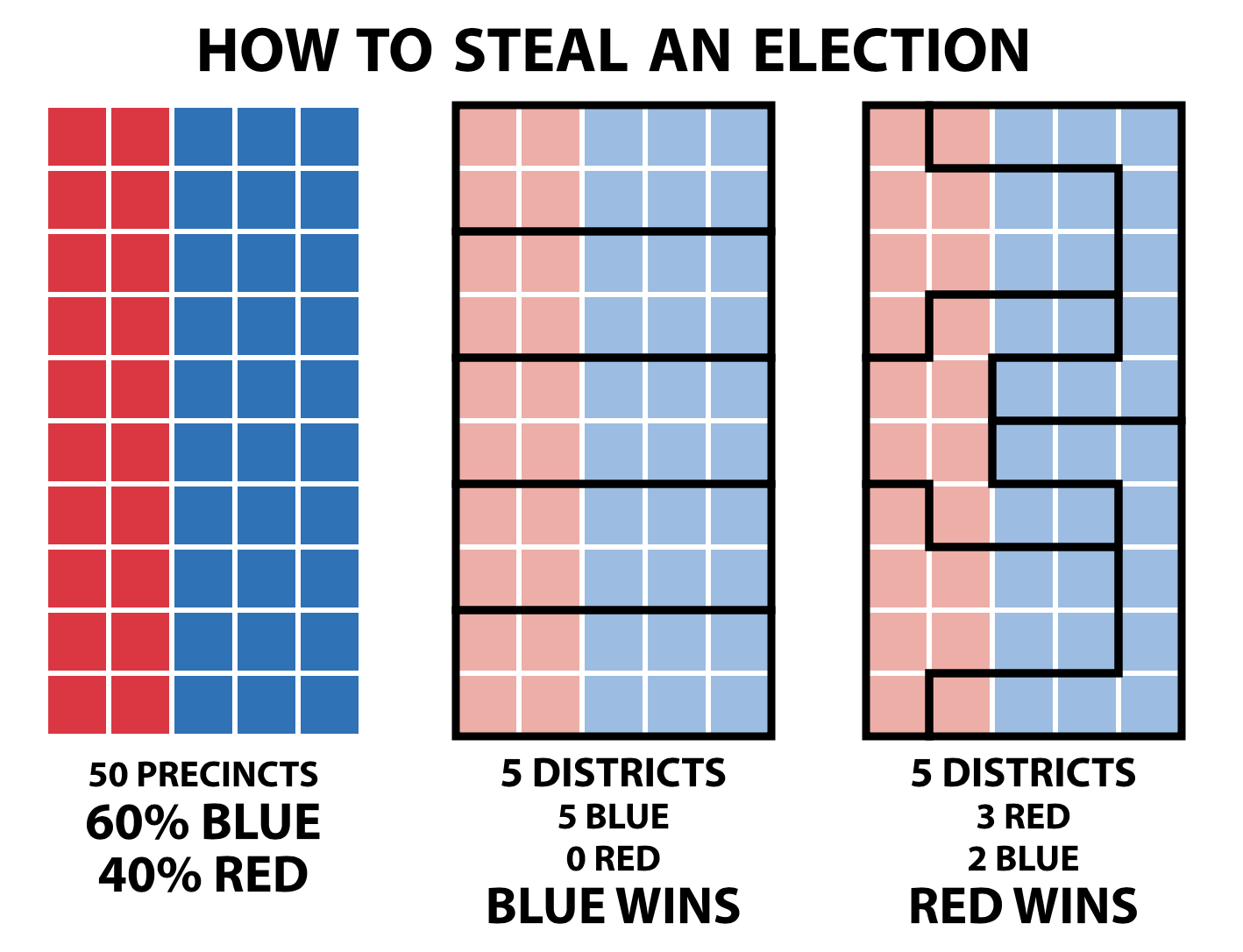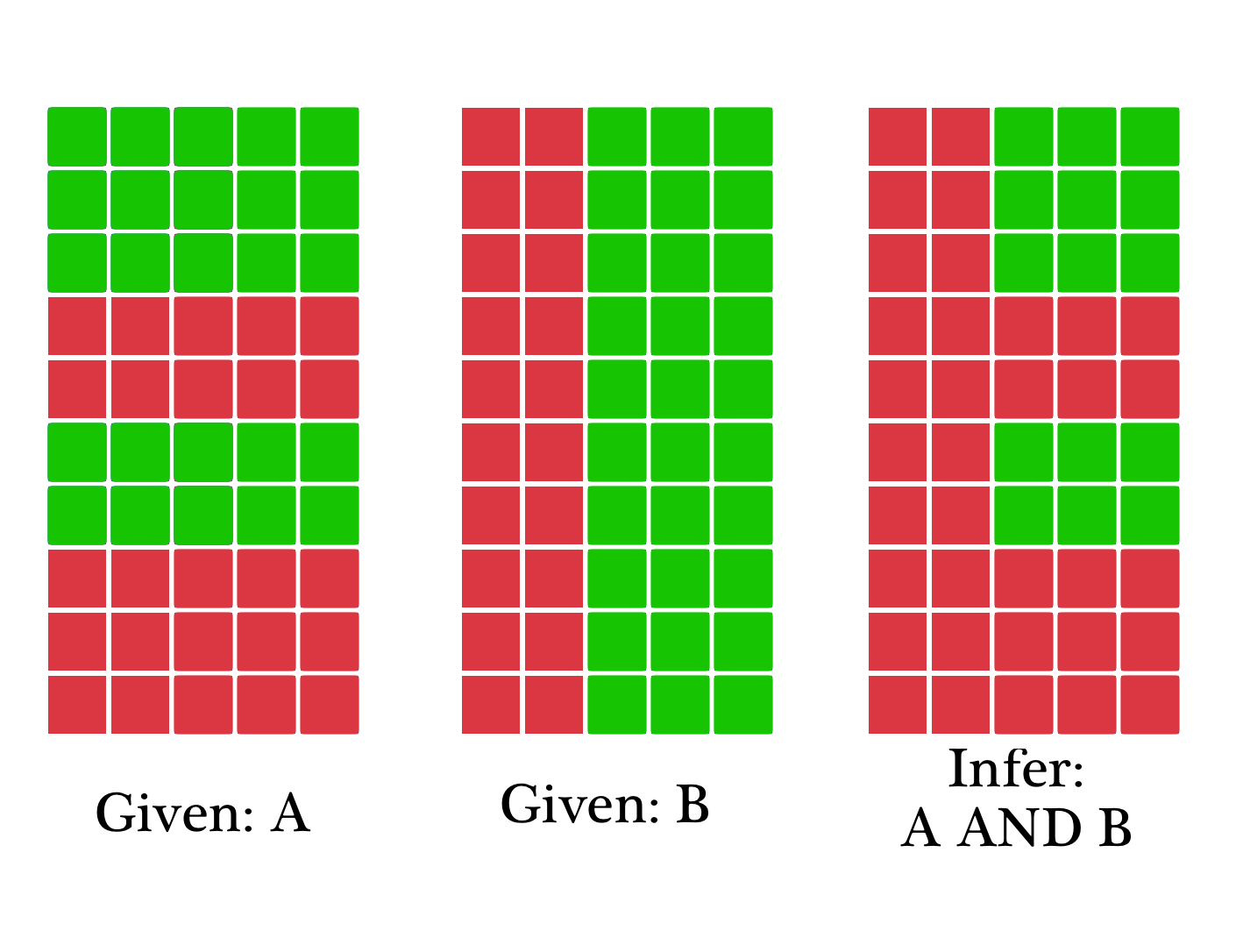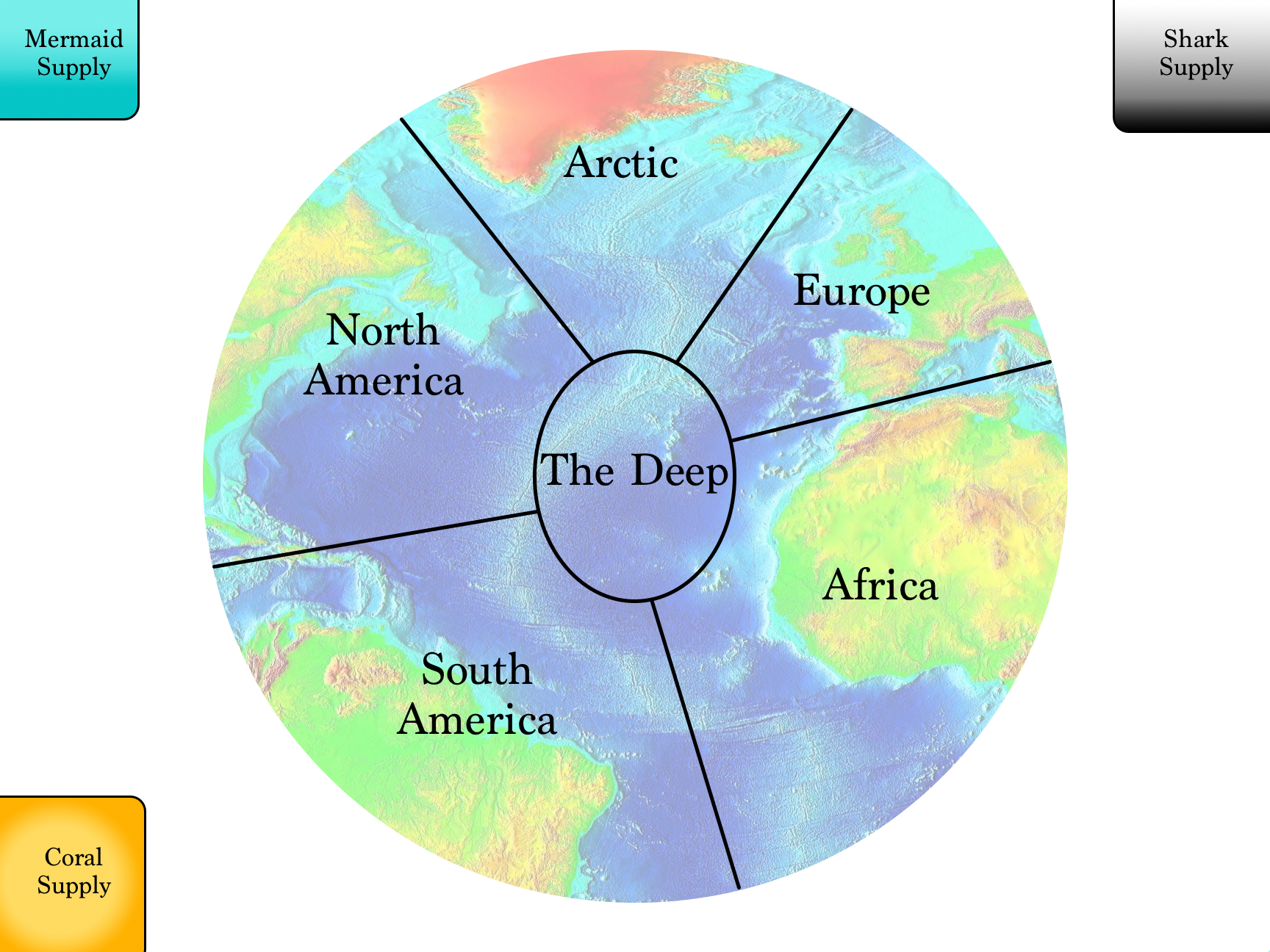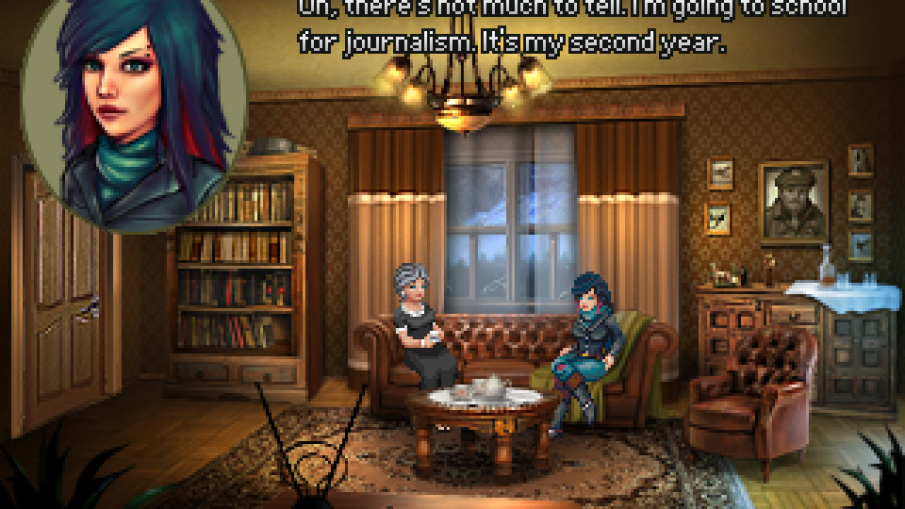I saw the recent announcement of the release of Kathy Rain, and found myself reflecting on how, despite my satisfaction with mystery novels and movies, mystery games have long disappointed me. Largely, it’s because such games rarely give you any incentive to develop hypotheses–sometimes there’s an element of memory or exhaustive search, but mostly, it’s stuff like “Detective Mode” from the Arkham games–you can’t do anything until you see the highlighted clue and press x on it, then the next clue is unlocked. I started thinking about how to do that better, and it occurred to me that I write for a gaming website, so I have a forum to express my terrible ideas to an audience! Here are two.
Some day I’ll learn to use my powers for good, but it is not this day.
The Gerrymandering Game
Some time ago, I tried to come up with a better way to teach formal logic to middle- and high-school kids. It used to be part of New York State’s math curriculum, and I’ve taught it to kids that age before, so there’s no developmental bar, it just got left out of Common Core. But, if there were a more fun way to help kids get a handle on what logical formulas mean, I think it would help a lot to make the argument for bringing it back (and, perhaps foolishly, I hope that this would make it easier to teach children how not to imitate most internet comment boards).

Though my initial plan was just as boring as the usual exercises, I have hope for this one. The idea would be to create states with some manageable number of nodes (perhaps 100), and assign each of these nodes to agree or disagree with some primitive logical statements (A, B, C, etc.). You would then be given a hypothetical party whose platform was some composite sentence, say (A AND B) IF AND ONLY IF C. You’re given individual maps of the primitives, and must infer from them which nodes agree with the platform, and then draw districts such that your party gets a majority in as many districts as possible. I would particularly enjoy having actual algorithms which have been proposed to reduce gerrymandering added as challenges. For example, on a particular batch of levels you might only be able to draw contiguous districts, or avoid concavity, or draw only horizontal and vertical lines. We might even have implementations of the shortest splitline algorithm, or procedures which are in use in some places today.

My First COIN
GMT’s COunter INsurgency series is very highly regarded, but I’ve only played Liberty or Death, and it’s going to be beyond my children for years. I understand Cuba Libre is more approachable (and perhaps of particularly timely interest, with Netflix’s release of The Cuba Libre Story and the recent death of Fidel Castro), I wanted something with both a theme and mechanics which strip this basic structure down to essentials.

My first attempt is set in a fantasy version of the Atlantic Ocean. The four factions are the Coral Minds, Shark-men, Mermaids, and the Deep Ones, a race of manipulative demons sealed away at the bottom of the ocean. To simplify things, each faction has one Action, one Bonus, and a unique win condition (for those familiar with LoD, there are a variety of each available to its factions). Each turn one card from the event deck gives players an event option, with the next turn’s event revealed atop the deck. In my first draft, I had the order of play determined by the event card, which is helpful for balancing, but I think probably not worth the confusion to younger minds. Better would be to have a static order, and balance the cards with their effects.
Only two players may play each turn, but which option the first player chooses determines what’s available for the second, and no one can play in consecutive turns. The options are 1) Action and Bonus, which lets the next player do the Event, Action, or Bonus, 2) Action only, which lets the next player only do their Bonus, and 3) Event, which allows an Action and Bonus to the next player. Alternatively, a player may skip, which keeps them available to play next turn, passes their options to the next player, and allows them to add a single unit from supply to the board (as the Deep Ones have no units, they may take a coral, which they spend like currency, from supply and add it to The Deep). This is all quite similar to the main COIN games, as I understand the series, and was the principle element I wanted to make familiar to younger players. Battles are simple: flip a coin for each mermaid and shark. Mermaid heads remove Sharks to supply, Shark heads alternate removing first a Coral to the Deep, then a Mermaid to supply.
We playtested it once, and the factions did play very differently. Mermaids win when the event deck is exhausted, so they’re just playing for time. Their action replaces one Shark with a Mermaid (magic is weird), and their bonus just shifts all Mermaids one region clockwise with the currents. The Shark-men win if all Sharks are on the board, but their action is to move every shark to a neighboring region declare one battle (which keeps the Coral and Mermaid populations in check, but also usually sets them back on their win condition). Fortunately, their Bonus is the sexiest option: they place a Shark anywhere there are two Sharks. The Coral Minds win when all regions except the Arctic have at least three Coral, which their Action directly serves: place a Coral in any non-Arctic region or two Coral in a region which already has Coral. Their bonus represents the beneficial effects of deeply thinking and taking indirect action: they can replace the on-deck card with a random card from the discard pile. Finally, the Deep Ones are trying to spread a blight to every region. Their action is to start a battle, which helps them destroy Coral and keep the Sharks from overpopulating, but their bonus their central dynamic: they may spend five Coral from the Deep to remove everything in one area without a blight token to supply, and then place a blight token there.
I’ll post all the card text in a comment, but I’ll have to rework them if I do get rid of the variable player order on the cards, anyway, as some of the cards are deliberately overpowered for the last player. But the dynamics of the game seem basically sound already–the Deep Ones want to keep the Shark population large enough to send them enough Coral to blight the world before the deck runs out, which requires that they risk a Shark victory. The Sharks want to choose their battles, but their need to move constantly means this requires delicate planning. The Coral Minds are in an uncomfortable symbiotic relationship with the Mermaids, who are their principal way to keep Sharks from overpopulating and destroying all the Coral, but the only way they have to defend the Mermaids involves backsliding on their win condition. And the Mermaids are constantly balancing everything.
As you now know, my game ideas are bad enough that I’ve no need to hold tightly to my intellectual property. If you have any equally terrible ideas, share them in the forum, and we can all express our appreciation for the professionals. I’m going to see if I can imagine a decent game based on home improvement catastrophes and how to fix them (the idea which Kathy Rain kicked off, because these are the sorts of mysteries I face in real life) or the eleven American nations.



As promised:
Setup:
North America: 2 Sharks, 1 Mermaid
South America: 2 Coral, 1 Mermaid, 1 Shark
The Arctic:
Africa: 1 Coral, 1 Shark
Europe: 1 Shark, 2 Mermaids
Shuffle cards, flip first event, put the on-deck card face-up on top of the deck.
Cards:
Sunken Treasure
MDCS
Choose a region. Move all Mermaids there and add one Coral.
Atlantis Settles
CDSM
Choose a region. Move all Coral there to supply.
Waterspout
DCSM
Choose two regions. Move all Sharks and Mermaids in one to the other.
Poseidon’s Wrath
SMDC
Remove a Shark from every region containing a Mermaid.
Hurricane
DSCM
Remove a Mermaid and a Shark from every region without a Coral.
Rapid Bloom
CMSD
Choose a non-Arctic region. Add two Coral there.
Bless
DMCS
Remove one Blight token.
Surprise
SMDC
Choose two factions. They are unavailable next turn.
All Against All
MDSC
Declare a battle in every region.
Bitter Enemies
SCDM
Choose a region. Declare a battle there, then declare a second battle there.
Spontaneous Generation
DSCM
For each Coral in Europe, add one Shark there.
Strengthen Bonds
CDMS
Move three Coral from The Deep to supply.
Weaken Bonds
CDSM
Move three Coral from supply to The Deep.
Creeping Dread
DMSC
Add a Blight token in The Arctic.
Poseidon’s Triplets
SMCD
Add three Mermaids in Africa.
New cards (added after first playtest):
Feed the Hungry
MSDC
Remove up to two Mermaids from North America. Replace each Mermaid removed with a Shark.
Feeding Frenzy
CSDM
Remove a Mermaid from any region. Move all Sharks there.
Muster
MCSD
Choose a region. Add Mermaids to that region equal to the number of Sharks there.
Enigmatic Disappearance
SDCM
Remove one Shark on the board from the game.
Fertilization
CSDM
Declare a battle in any non-Arctic region. For each casualty, add one Coral.
Undersea Volcano
MSCD
Choose a region. Remove all Coral, Sharks, Mermaids, and Blight tokens there.
Sounds like fun! One thing it reminded me of was this website that lets people publish cards and lets players print them. https://www.drivethrucards.com
I haven’t actually explored it much so I’m not sure if it would be better than just publishing a PDF if you want to get your game out there, but might be worth a look.
I might be interested in submitting illustrations for some cards if you like, send me a PM if that sounds fun.
If a few more people seem interested, I might try to rework it so that I can get rid of the variable order of play on each card, and test it a few more times. If that happens, I’d love to have the cards illustrated! For the first version, I just took our old copy of Candyland and wrote the text onto those cards (which was cathartic).
Those ideas don’t look terrible to me at all, which might mean that my pie-in-the-sky plans to become a game designer/developer are doomed to failure …
All we need is enough people with taste as bad as mine, and we can make millions!
Okay, new one: Matt Thrower recently tweeted a response to the challenge to mash up the last two games you played. In his case, it was Dishonored and Hearthstone, which led to some potentially cool card design. For me, it was Dream Quest and Burnout Paradise. A rogue-like deck-builder themed around racing and destruction in cars.
So, right off the bat, you can map the city of Burnout Paradise onto the dungeon in Dream Quest. Instead of wandering a dungeon, you’re driving around the city. Instead of shops, you encounter auto repair or boost refilling stations. Instead of battles with monsters, you find events (races, marked man races, stunt runs, or car combat). Instead of classes, you have cars. That actually all basically works okay, but then the question becomes what the cards could be with which you build your deck.
That got me thinking about something which I think might have more potential than everything else (which was a fun exercise, but perhaps not of any lasting value). My initial thought was that cards could represent various simple maneuvers, like speed changes or swerves. But what you need in order to execute a good takedown of another car is often to aim correctly and then boost your speed, so I started wondering whether you could have cards which wouldn’t do anything themselves, but would let you play two cards as one, or perhaps let you hold a card for the next hand so that you’d have a better chance of getting the pair you need, but at the cost of letting your opponent see some of your intentions.
Then I figured there’s no need to have special cards for that at all. You could have a system in which any card can start a chain, and at the end of your turn, the first card in each chain is executed and then discarded. This would let you balance doing stuff now, unpredictably, against doing stuff later, tipping your hand but potentially allowing you to set up a monster turn.
Alternatively, you could have cards which can start chains and cards which can only continue them (or end them, or can’t start a chain but which, when placed at the end of a chain, can fork it).
Anyway, that all sounded pretty exciting to me, so I wanted to write it down somewhere before I forgot it. Maybe someday I’ll do something with it.
If there isn’t a '52 Pickup in this game, I’m not buying it.